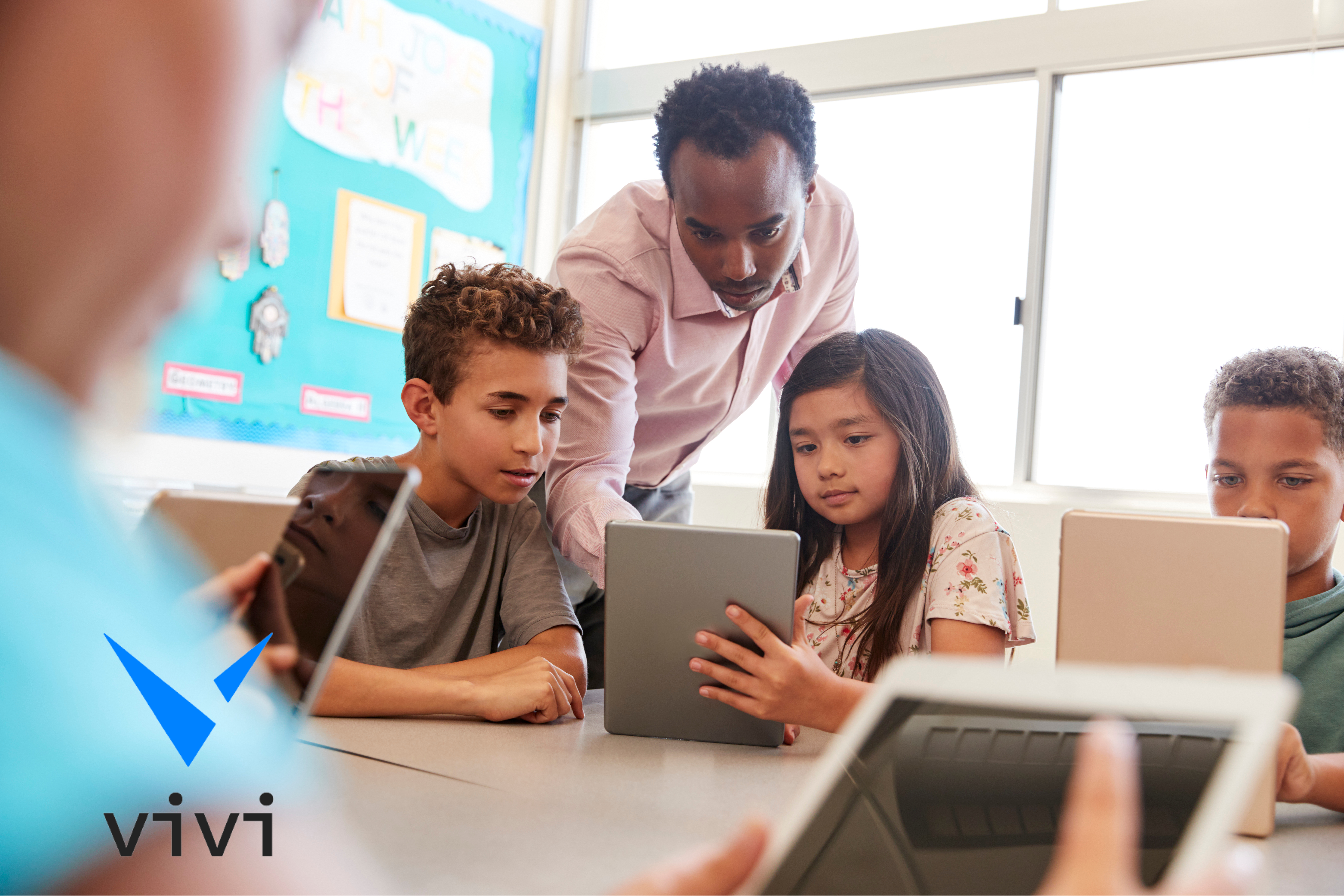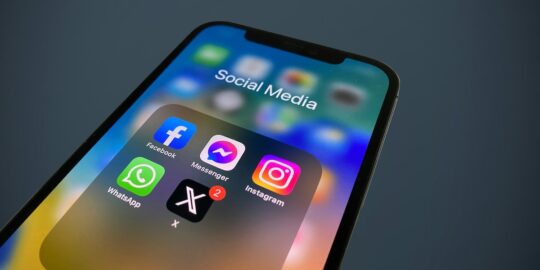
Summary
Classroom technology has come a long way in the last decade. This article looks at the importance of screen mirroring and how it enables teachers to connect with their students like never before. We also look at tips for identifying the right solution and getting the most out of it in the classroom.
This article will look at:
- Understanding what screen mirroring is and its benefits
- Evidence to support the role of wireless screen mirroring in the learning environment
- How teachers use screen mirroring in the classroom
- How to play media and share student work
- Tips for getting started
Introduction
There was a time when a student’s position in the class really mattered. Classroom stereotypes labelled those at the front as studious and most likely to make their mark, whereas those at the back and furthest from the teacher were thought to be more interested in passing notes than learning. Simpsons creator Matt Groening was apparently one of the latter. Allegedly, he spent much of his class time drawing cartoons.
But the era of teaching from the front of the class is drawing to a close. In the last decade, the culture of schools and classrooms has changed significantly. These days, school is about inclusion, collaboration, and engagement. As technology comes to teaching, the classrooms are changing too. Tools like screen mirroring are now freeing teachers to spend more time among their students.
What is screen mirroring?
Until relatively recently, giving a presentation with slides or any kind of media meant hooking a laptop up to a projector. Classrooms were filled with VGA cords and, latterly, HDMI cables and to make things more complicated, no two laptops seemed to have the same type of ports. Most teachers dreaded presenting in a new room—there was the chance all the preparation they had done for the lesson might not actually make it to the screen.
Walk into most of today’s lecture theaters and classrooms, however, and the cables have gone. They’ve been replaced with wireless presentation solutions.
According to EdTech magazine, there are three distinct types of wireless solution.[1]
Screen mirroring allows you to share everything you do on your device to a television screen, projector or display.
Screencasting is used to share online media from a device to a screen. The difference is that it allows you to perform other tasks on your device while the media is being cast.
Screensharing involves giving another user access to your screen on theirs. This is usually used for functions like IT support.
What are the benefits of screen mirroring?
Teachers are time-poor—many work an average of 54 hours per week[2]—and lessons have a strict time limit. Fiddling with adaptors, cables and AV equipment for 5-10 minutes at the start of class interferes with the lesson plan and can lead to disruption—while the teacher is busy wrestling with technology, it gives those at the back of the room a chance to come to life.
Wireless screen mirroring makes the connection process simple. The lessons can begin on time, and all the teacher’s preparation is put to good use. But it also brings an added advantage. Because there is no physical connection between device and display, the teacher is no longer chained to their desk. They can move around and teach the class from wherever they choose. It means they can even engage with those who have previously preferred to hide away.
Is there any evidence to support the role of wireless screen mirroring in the learning environment?
A report released by the Grattan Institute—an independent think-tank focused on Australian public policy—in 2017 reported that as many as 40 per cent of Australian students were unproductive in class. It also claimed that disengaged students could be as much as two years behind their peers in the classroom.[3]
The report recommended creating a positive classroom environment and referenced the importance of good relationships between students and teachers because it correlates to their overall success. According to the Institute, student participation is a critical part of effective teaching and learning. It allows students to speak, problem solve and collaborate. And the more opportunity there is to respond, the more likely they are to learn well.
All of these are relevant to wireless screen mirroring. Tools like Vivi help teachers create a positive learning environment in which to build more effective relationships with students and facilitate collaboration. They improve student engagement by bridging the gap between teacher-led instruction and personalized learning.[4]
How do teachers use screen mirroring in the classroom?
The extent to which teachers use screen mirroring depends largely on the functionality their particular solution offers, and their level of comfort using it. If it is reliable, simple to use and packed with features, a screen mirroring tool quickly becomes an enabler in the classroom.
According to teachers, the most common ways screen mirroring is used are:[5]
Playing media
Digital media is becoming a staple in the classroom and with good reason. Using it alongside non-digital lessons can help develop a longer attention span, increase the motivation to learn, increase classroom participation and engagement, and lead to greater academic achievement and stronger digital literacy.[6] Teachers say they use screen mirroring to play videos and music to illustrate points, aid with understanding and—sometimes—just to entertain.
Showing and editing students’ work
Collaboration between teacher and student is an important part of building an effective relationship—the more effective the relationship between student and teacher, the more engaged the student is likely to be.[7] It is common for a teacher to display a student’s work on the screen for the rest of the class to comment on. The Grattan Institute’s findings endorse this approach: peer-to-peer collaboration and the opportunity to work as part of a group lead to increased academic engagement and reading achievement.[8]
Allowing students to share their work
Having students share their work is an important component of collaboration. Children tend to be innately social and creative and are motivated to exchange ideas, thoughts, questions and feelings.[9] Sharing work in this way is a powerful confidence builder.[10]
How to get started
Any investment in technology is a big step. When exploring solutions, every school will have its own wishlist, but in general, there are two primary considerations.
Firstly, there’s the financial impact. Good questions to ask are around durability and shelf-life—nobody wants to commit significant funds to something that will be obsolete within a few years. It’s also important to know the expected return on investment and how long it will take to achieve.
The impact on the school’s resources is also an important consideration. Most IT teams are significantly smaller than their business equivalents, so a system requiring relatively little support is probably a more attractive solution than one that needs constant intervention.
Finally, it’s a good idea to involve a small group of influential teachers in the selection process. It helps ensure teacher buy-in—no matter how good a solution might look on paper, it’s an expensive failure if it’s not adopted and put to use by teachers.
At Vivi, we suggest taking a unit on trial for a period of time. It’s the only way to perform a critical evaluation of any tool that you hope will deliver impact to the classroom itself.
Tips
Once you implement a screen-mirroring solution, give teachers who are confident with technology the scope to support others. There is a body of evidence to show collaboration between teachers improves job satisfaction, provides emotional and psychological benefit and improves competence.[11] By watching others use technology in the classroom, teachers can also gain confidence and valuable tips they can then incorporate into their own lessons.
With any new technology, there will be those who embrace it from day one and those who are a little daunted by it. Some of the teachers we’ve spoken to—who have since gone on to become superusers—said they were a little nervous at first. Their advice? Just give it a go.
Conclusion
Screen mirroring enables so much in today’s classroom. As a result, teachers can step away from the front of the class and connect with students in a way that their predecessors never could. Of course, down the track, there could be a drawback; had screen mirroring existed forty years ago, there’s a very good chance we’d never have seen the Simpsons.



